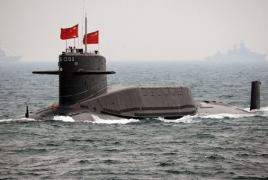
China appears to have largely completed major construction of military infrastructure on artificial islands it has built in the South China Sea and can now deploy combat planes and other military hardware there at any time, a U.S. think tank said on Monday, March 27, according to Reuters.
The Asia Maritime Transparency Initiative (AMTI), part of Washington's Center for Strategic and International Studies, said the work on Fiery Cross, Subi and Mischief Reefs in the Spratly Islands included naval, air, radar and defensive facilities.
The think tank cited satellite images taken this month, which its director, Greg Poling, said showed new radar antennas on Fiery Cross and Subi.
"So look for deployments in the near future," he said.
China has denied U.S. charges that it is militarizing the South China Sea, although last week Premier Li Keqiang said defense equipment had been placed on islands in the disputed waterway to maintain "freedom of navigation."
A Pentagon spokesman, Commander Gary Ross, declined to comment on the specifics of the AMTI report, saying it was not the Defense Department's practice to comment on intelligence.
But he said that "China's continued construction in the South China Sea is part of a growing body of evidence that they continue to take unilateral actions which are increasing tensions in the region and are counterproductive to the peaceful resolution of disputes."
AMTI said China's three air bases in the Spratlys and another on Woody Island in the Paracel chain further north would allow its military aircraft to operate over nearly the entire South China Sea, a key global trade route that Beijing claims most of.
Several neighboring states have competing claims in the sea, which is widely seen as a potential regional flashpoint.
In recent years, the United States has conducted a series of what it calls freedom-of-navigation operations in the South China Sea, raising tensions with Beijing.

